DLTK's Blog
Packing for a Day Hike
August 2019
I am a massive fan of spending time in the outdoors! My partner and I try to go for at least one dayhike or backpacking trip per weekend in the summer. There are a lot of reasons we love hiking:
- spending time together helps us feel more connected,
- exploring the outdoors helps us appreciate and respect the world that we live on,
- doing activity increases our mood and helps us maintain our mental health,
- and we can achieve all of those things without having to spend a lot of money on an activity.
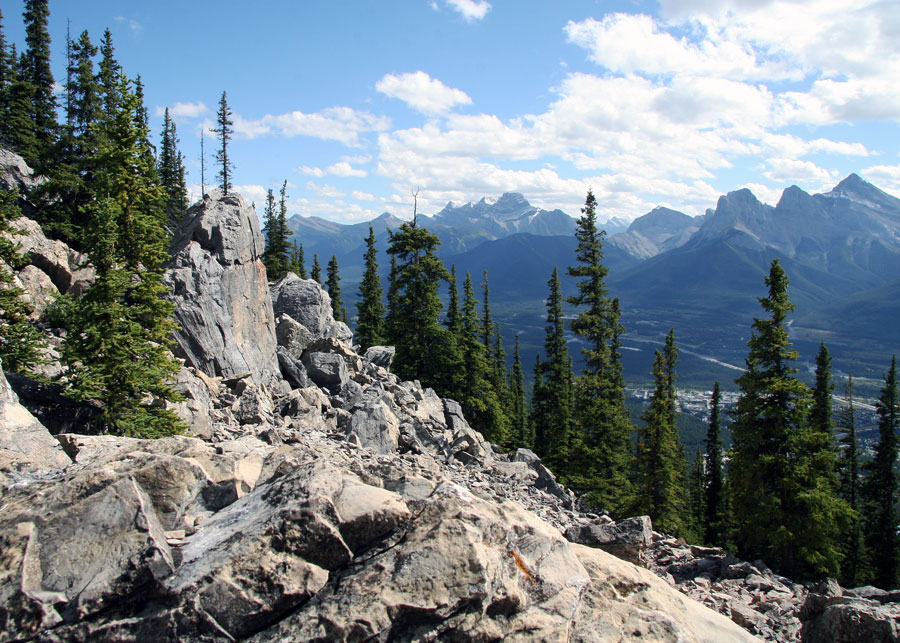
When we do go hiking it is very important to us that we are prepared and safe. We have a full checklist and an organized box of our hiking gear to make sure that we don't leave behind anything important.
Most people that we see on backcountry camping trips are likeminded people with all the appropriate gear and safety equipment. Unfortunately, when we are out on day hikes, it seems that quite a few people are unprepared. Perhaps this is because a day hike trip doesn't seem like as much of a commitment as going on an overnight hike.
I think that learning how to be prepared in the outdoors is hugely important, so I thought I would share with all of you my “Packing for a Day Hike” checklist! When I was younger my parents consistently aimed to teach me about preparedness and they also sent me to an outdoor summer camp that taught me the skills I need to be safe when exploring nature. So I was hoping that by sharing my knowledge with all of you would be one way to help teach a new generation of outdoor explorers to be safe in nature!
CLOTHING
Clothing is always the first thing I pack for a day hike. I like to look at weather to know what to expect, but also make sure to bring some essentials with me regardless of the weather report. If you want some extra information you can look at my mom's blog post on “Dressing the Family for a Hike”.
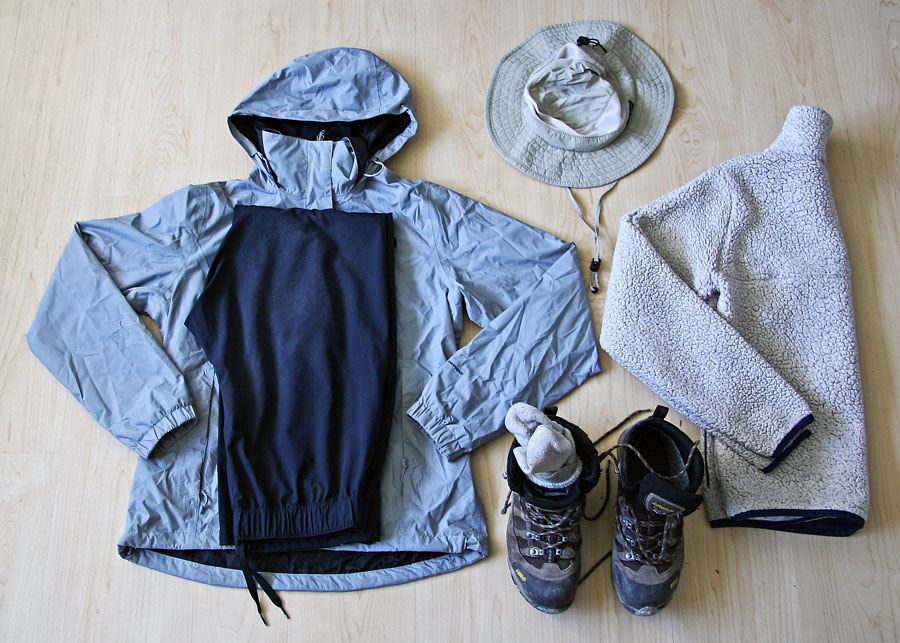
Rain Gear (jacket and pants)
— Absolutely essential! Even if the weather doesn't call for rain because you never know.Extra Layers
— Depending on the weather I may bring a few extra layers but at the very least I make sure to bring a warm fleece sweater.Hiking Boots (with wool/hiking socks)
— I always bring hiking boots if I am going up a mountain or any significant elevation; however sometimes I wear running shoes if I know it isn't as strenuous a hike because my hiking boots are quite heavy duty. If you have weak ankles, like my partner, I would recommend getting a pair of light hiking boots that aren't too heavy even for the less strenuous hikes.Weather Appropriate Extras
— Depending on the weather I will either bring a sun hat, a toque and mittens, or all of the above if it is a weird day with all sorts of weather patterns.
BASIC GEAR
There a a number of basics that I always make sure to bring with me on a hike, even if my day hike is relatively close to home or low difficulty.
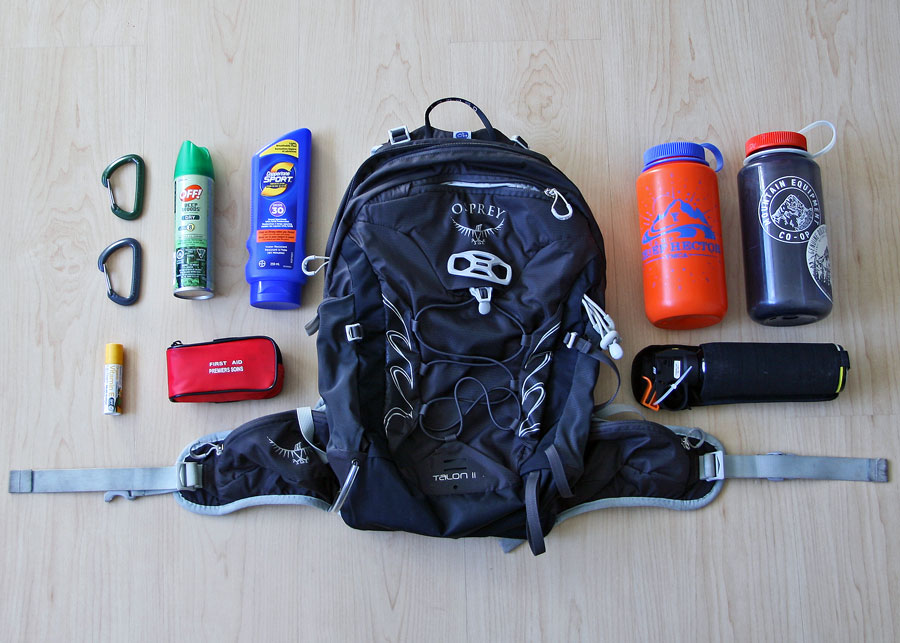
Day Pack
— When I am going on a basic dayhike I bring my smaller 11 litre bag that manages to fit all my extra layers, basic gear, and food (Callum is kind enough to bring the extra safety supplies). I also have a larger 33 litre bag that I have for any day hike that requires going “off the grid” or is particularly long and strenuous.
— I also really like my packs to have pockets in the waste straps because I can easily tuck away pieces of garbage that I find along the trail while I hike. I try my best to leave trails cleaner than I left them.Basic First Aid Kit
— I usually bring a large first aid kit, but if you are going to be near emergency medical services (for example, walking in a city park) having a small kit with some bandaids, gloves, a CPR face mask, and emergency blanket is still a good idea.Animal Protection
— Depending on where you are hiking you will need different animal protection gear. I hike in the Rocky Mountains so I make sure to bring a canister of bear spray with me. One very important note is that some gear (like bear spray) is illegal to carry in cities and towns because it is considered a weapon, so make sure to clarify where you can and cannot carry these items.Extra Carribeaners
— These are just super useful to attach things to your bag so I highly recommend having a couple spare.Water Bottles
— It is very important to bring a minimum of 2 litres of water per person and have water breaks every 15-20 minutes. If you are hiking with younger kids, water is something that they can carry on their own and they may need slightly less water since they are smaller.Sun and Bug Protection
— Sunscreen and bug spray are essentials but not many people know how to us them properly.
—First, all sunscreen provides the same amount of protection but the SPF signifies how long you will be protected for. Basically, unprotected skin burns after an average of four minutes in direct sulight (this is different for everyone though). To figure out how long your sunscreen protects your skin for you just multiply the SPF by your skin's average burn time (ie. SPF 30 x 4 minutes = 120 minutes of protection). That way you know how often to reapply sunscreen.
—I used to not bother with bug spray because my misquito bites aren't itchy, but since ticks have become a larger problem I think it is important to be extra cautious, so I make sure that my bug spray has some tick repellent.
—When you apply sunscreen and bug spray you need to make sure that you apply the sunscreen half an hour before the bug spray otherwise it won't absorb into the skin. Also, don't forget that your lips can burn too so I recommend using some SPF lip balm.
EXTRA SAFETY GEAR
My partner and I always make sure to bring our extra safety gear if we are going for a day hike in the wilderness (but maybe not if we are just walking around city parks for the day). Nature is wonderful but it can also be really unpredictable. So having safety equipment on a dayhike is sort of like having car insurance—99% of the time you don't need car insurance, but when something happens that you do need it, you are very grateful that you got car insurance in the first place.
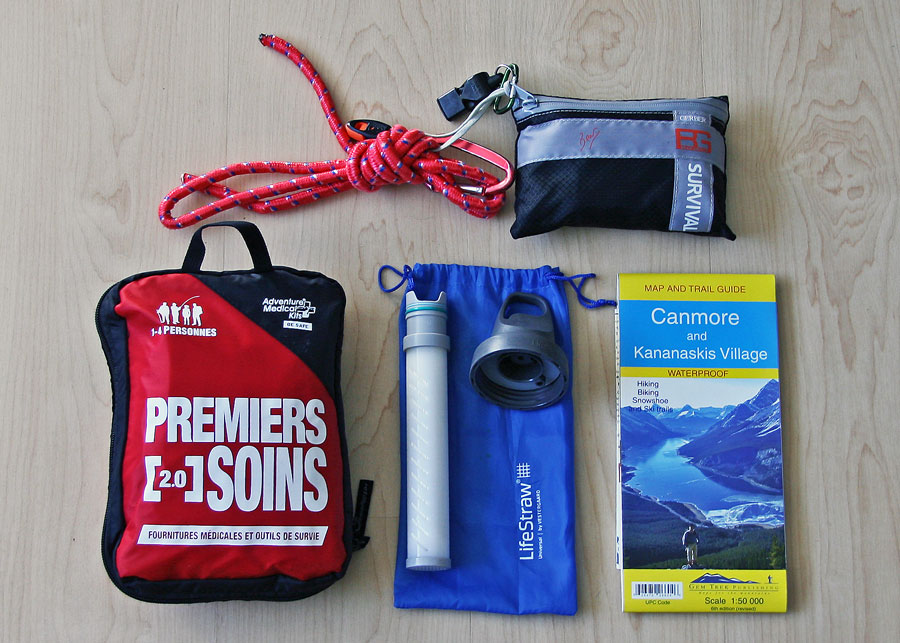
First Aid Kit
— Absolutely essential! Make sure tht you familiarize yourself with your first air kit as well so that if you have to use it you know where everything is.Water Filtration
— This is hopefully something you won't be in the position to need, but if you do run out of water having some sort of water filtration system is important. Callum and I bring a water filter straw that you can put in your water bottle because its quite light and small. We also have water purifying tabs (but tend not to bring these on dayhikes) which are even smaller and lighter but when once you've used up all the tabs you can no longer purify your water.Map
— If you bring your phone with you on a trip you may not need a map, but if you might be going somewhere without signal a map is really important. Make sure that you know how to read a map too; Callum and I have a little map reading cheat sheet we bring along just in case. You can also opt to bring a GPS, satelite device instead but these are really expensive and with technology there is always the chance it will run out of battery.Emergency Kit
— Look below for details of what is in our emergency kit.
EMERGENCY KIT
An emergency kit is a great piece of equipment to bring on a hike and to have around just in general. Callum and I like to keep it in the back of the car just in case we go on an impromptu adventure! Callum got this emergency kit at an outdoor store and then we added a few extra pieces too it.

Pocket Survival Guide
Rope and Carribeaner
Whistle
Pocket Knife
Lighter
Flint and Steel
— This is for fire starting in case your lighter runs out of fuel.Bag of Survival Tools
— This will depend on the survival kit you get but some of the notable things in ours are extra rope, emergency blankets, wire, sewing supplies, and waterproof matches.
FOOD
This is my favourite part of packing! My mindset is that I want a hike to be as enjoyable as possible so I like to bring plenty of food and snacks (as long as I can carry it comfortably). The picture below is a slightly paired down version of what we usually bring because this was a packed meal for a shorter 4 hour day hike.
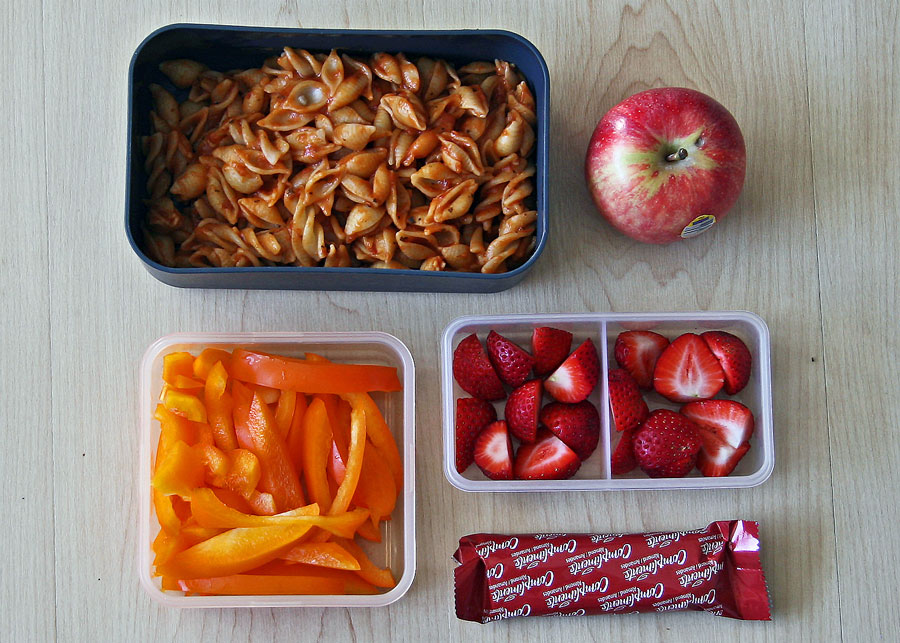
Main Meal
— I love having a main meal on a hike that I eat when we've reached our destination and have a longer break. I usually bring things like sandwiches, pasta, stirfry, or chilli because they are all easy to pack, delcious, and filling.Fruits and Vegetables
— I like to bring lots of fruits and vegetables because it is easy to forget to eat the full requirements when out adventuring, which is okay every once in awhile but not so good when you are a regular hiker.Snacks
— I usually pack heaps of snacks on a hike. I like things like granola/protein bars, trail mix, sesame snacks, or anything that can give me that extra energy boost.An Extra Treat
— Although it isn't pictured, I like to have some sort of a treat for when I reach the hike destination or for the car ride home. I bring things like a pudding cup, some cookies, or a chocolate bar. It is a great way to celebrate getting to the top of a mountain or the end of a long hike and its also a great motivational tool (especially for young children). Hikes can be really challenging but also so rewarding, so having a little something to help you through it is a great tool!
Hopfeully this packing guide has given you a couple useful tips for preparing to hike! It seems like a lot of energy when you break it down, but if you make yourself a little check list or keep your hiking things together it won't take too long. Plus, regardless of the effort, being prepared and safe means that it is a lot easier to have fun on your day hike and enjoy the incredible experiences that nature has to offer!
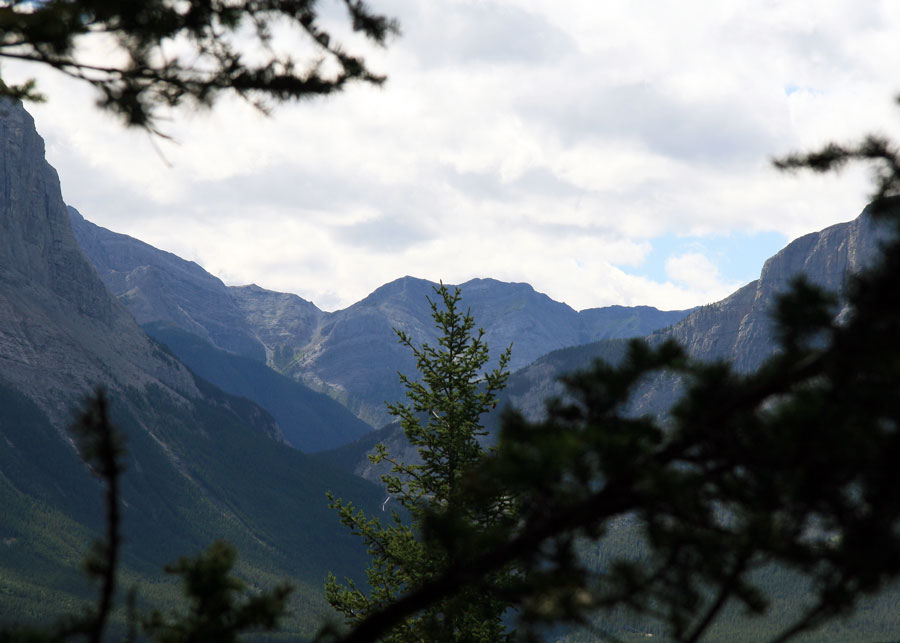
Make It...
Nature Walk Printables
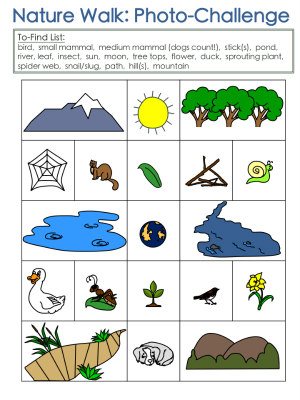
What you’ll need
- a piece of paper
- a pen or pencil to check the things you see
- a camera, if you're able to find access to one
Tips
- if you can see and check-off that you've seen 80% of the items in the table, then you can give yourself a prize (whether it be an ice-cream cone hot chocolate before or when you get home, or some yummy trail mix)!
- if you are using a camera, photograph the items you see in the table as you spot them on the trail!
- enjoy!
For children/adults
Easy Nature Walk Photo-Challenge color or B&W
(find 6 of the objects or animals!)
Difficult Nature Walk Photo-Challenge color or B&W
(find 16 of the objects or animals!)
For younger children
Nature Walk: Animals color or B&W
Nature Walk: Objects color or B&W
More detailed instructions are available on the Nature Walk Printables page.
Disclaimer: As ever, everything said in this post are my own thoughts. I haven't been given any compensation for the ideas or information that I share here.
 About Kaitlyn:
About Kaitlyn:
I am Kaitlyn, the K in DLTK, and I've been working for the family website since I could hold a crayon. Now I am all grown up and I live with my partner, Callum, and our adorable cat, Juicebox! When I'm not helping my parents on the site, I am studying psychology at the University of Calgary. I love my work and my studies, but when I can I love to head out to the mountains and enjoy the outdoors! You can connect with me on Facebook or Instagram. You can also follow my cute kitty, Juicebox, on Instagram.